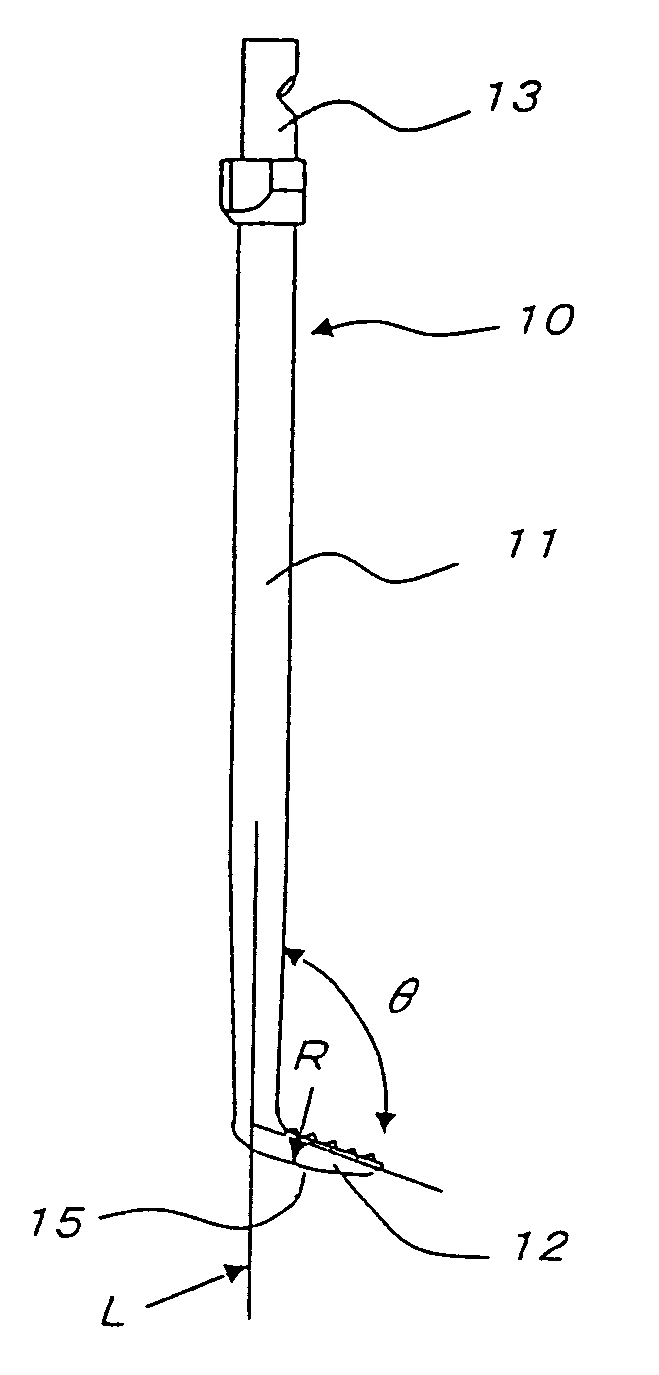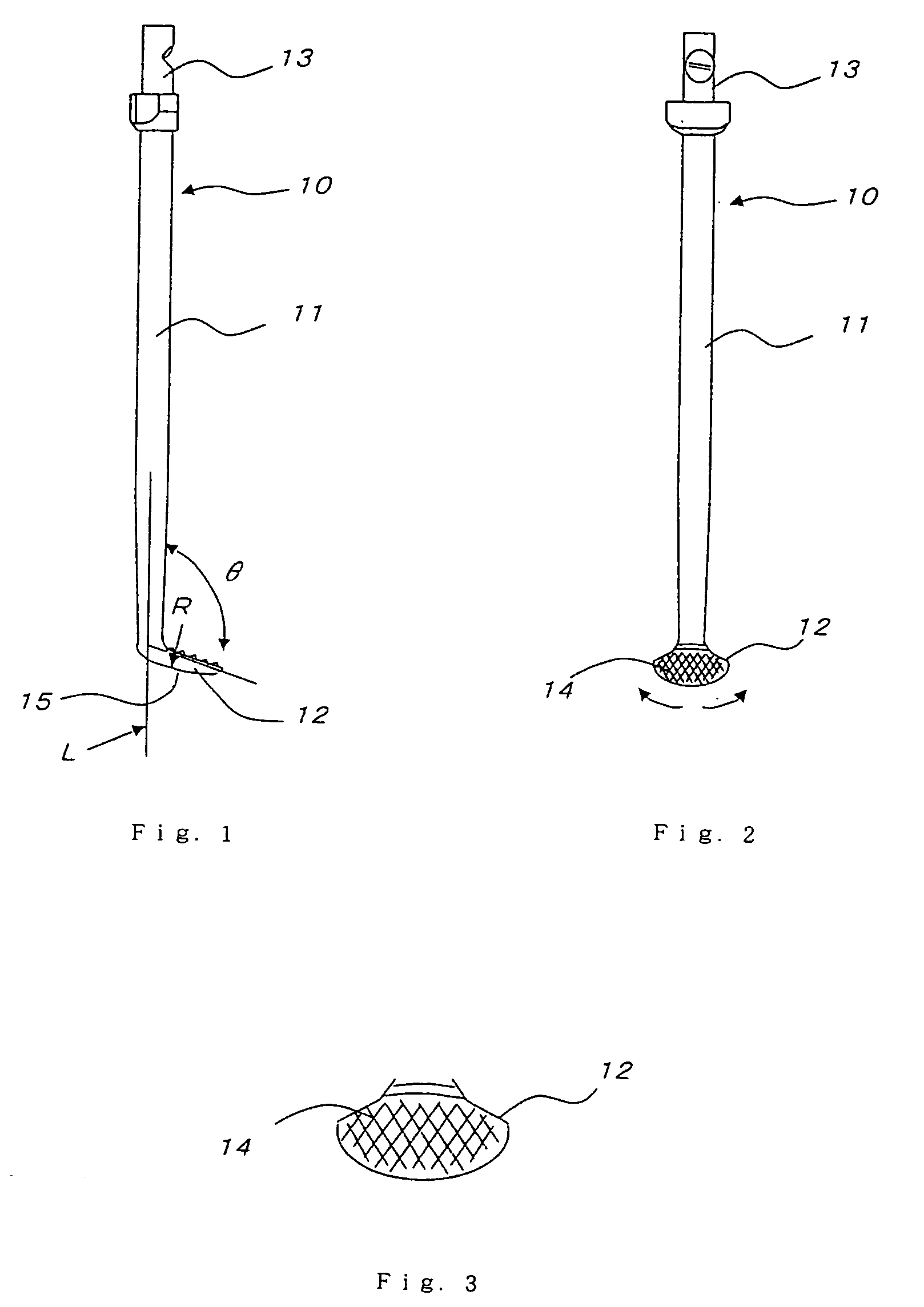Orthopedic instrument
a technology for orthopedic instruments and burrs, which is applied in the field of improving orthopedic instruments, can solve the problems of large incisions to be made in limited space, the inability to adequately trim (or polish) burrs on the cut surface of the angle of the jaw, and the high risk of rotary apparatuses b>25/b> to b>29/b>, so as to reduce the number of persons required and ensure the effect of trimming
- Summary
- Abstract
- Description
- Claims
- Application Information
AI Technical Summary
Benefits of technology
Problems solved by technology
Method used
Image
Examples
Embodiment Construction
[0054] Next, an embodiment of the present invention will be described in reference to the accompanying drawings.
[0055]FIG. 1, FIG. 2 and FIG. 3 are respectively a side view and a front view showing a bone file as a separate unit according to an embodiment of the invention and an enlarged view of details of the fan-shaped member as its key part.
[0056] An orthopedic apparatus, for example a file 10, has a shank 11, a fan-shaped member 12 which is provided at the front end of the shank 11, and a coupling 13 which is provided at the rear end of the shank and is to be connected with a driving source (handpiece) 30 (stated later).
[0057] The fan-shaped member 12 is inclined by an angle of θ with respect to an axis line L and file ridges 14 are formed on the fan-shaped member 12's surface (reverse face) oriented toward the rear end of the shank.
[0058] The shank 11 is designed to oscillate clockwise and counterclockwise continuously by a driving source 30 (stated later). For a means for ...
PUM
 Login to View More
Login to View More Abstract
Description
Claims
Application Information
 Login to View More
Login to View More - R&D
- Intellectual Property
- Life Sciences
- Materials
- Tech Scout
- Unparalleled Data Quality
- Higher Quality Content
- 60% Fewer Hallucinations
Browse by: Latest US Patents, China's latest patents, Technical Efficacy Thesaurus, Application Domain, Technology Topic, Popular Technical Reports.
© 2025 PatSnap. All rights reserved.Legal|Privacy policy|Modern Slavery Act Transparency Statement|Sitemap|About US| Contact US: help@patsnap.com



